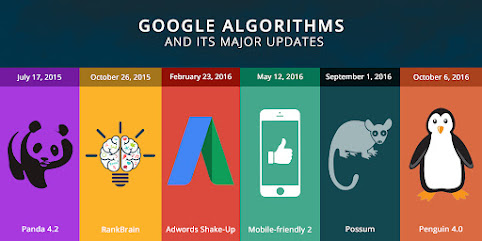SEO on-page
The method of optimising individual web pages in order to rank for them is known as on-page SEO. It describes a page's content and HTML code, both of which can be improved. This includes actions to improve the Meta description and title tags or to optimise the content. Off-page SEO, in contrast, relates to links and other indications.
Meta description
A page's content can be summed up in the meta description, an HTML tag with a maximum character count of 155. When the search word appears in the meta description, search engines tend to display it in the search results. As a result, optimising the meta description is crucial for on-page SEO. A page uses 155–160 characters, and an article uses 155 characters. Lists of pages and lists of articles are two distinct lists. The number of pixels is 1024. Grammar and spelling mistakes are not permitted in this area. A unique meta description is required. Only 90 characters are allowed in URLs.
Title Section
There are six levels of headers in HTML. All font alterations, pre-, and post-paragraph breaks, and any extra white space required for the title are handled by the title element. With H1 being the top level (or most important) and H6 being the lowest level, the heading elements are H1, H2, H3, H4, H5, and H6.
H1: This is the HTML's primary section. The most pertinent information will be included in the header. Here, the primary keyword is used. A crucial search key is thought to be the primary key. Pre-sizing, word restriction, and contrast features are present in H1.
H2 : The next level or secondary keywords are displayed using the H2: symbol.
Rich Extracts
Rich passages stand out among the others. They appear much better, and simply by glancing at them, you will learn more right away. Rich snippets have higher click-through rates than regular snippets. Most often, people choose to click on rich snippets.
Your snippet will receive more traffic from that search result if its click-through rate increases. Simply because more people are visiting your results, not because your ranking in search engines has changed. Rich snippets will eventually impact your rankings as well. Google will notice that more people are using your page than others when more and more people click on your results. Your rating will undoubtedly rise as a result.
Google Sandbox
The database, which is referred to here as a temporary data storage, muddles the data and the content of a sandboxed page. The Google Sandbox is quite comparable to a new website that is being evaluated and is being maintained at a lower position in search before obtaining the full benefit of its incoming links and content.
Content optimization
The process of making a website and its content more interesting, practical, and usable for users is known as content optimization. In order to perform better and rank higher in search engines, processes frequently involve duplicate material, bug corrections, and technical performance enhancements (such as page speed).
Anchor text
A link tag or link title are other names for anchor text. The phrases used in the anchor text influence the position that search engines like Google or Yahoo will give the website. Links without anchor text are also known as blank URLs or URL anchor text, and they are frequently found on the internet. Using the appropriate anchor text can improve the linked page's position for those keywords in search engines because different browsers display it differently.
Keyword optimization
In order to increase quality search engine traffic to your website, keyword optimization, sometimes referred to as keyword research, entails finding, evaluating, and choosing the ideal keywords to target.
The frequency with which a keyword or phrase appears on a web page in relation to the total amount of words on the page is known as "
keyword density." If a web page is relevant to a certain keyword or key phrase, it can be determined using keyword density in the context of search engine optimization. Simple content should be used. The content's focus keyword appears right away. keywords placed just before commas and periods (this helps to rank faster)

Optimize images
Delivering high-quality photographs on the web in the proper format, size, dimensions, and resolution while keeping the dimensions as minimal as possible is the goal of web image optimization. Image resizing, caching, and size compression are a few methods for optimising images. Introducing Image Kit, a clever image optimization engine that uses a clever compression algorithm to optimise images. It can significantly enhance the performance of your site when combined with a worldwide content delivery network for quicker delivery.




Comments
Post a Comment